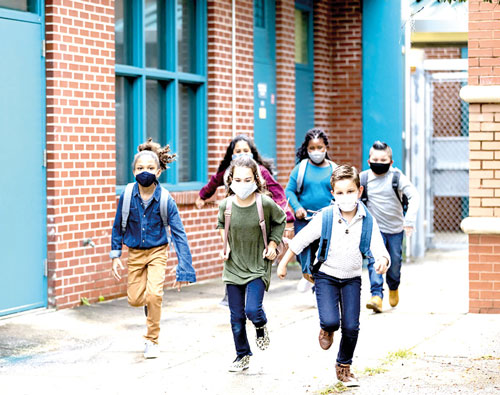Children and young people often report persistent symptoms after SARS-CoV-2 infection. In a systematic analysis of controlled and uncontrolled stud-ies, researchers found similar symptoms in those who had tested positive and negative for SARS-CoV-2 infection. Children who had tested positive for SARS-CoV-2 were slightly more likely to have some persistent symptoms. The study suggests that long COVID might be less of a risk for young peo-ple than previously thought.
People who recover from COVID-19 often report persistent symptoms or long COVID. According to the Centers for Disease Control and Prevention (CDC)Trusted Source, people can develop post-COVID conditions following SARS-CoV-2 infec-tion even if they did not have COVID-19 symptoms. Long-term effects may include fatigueTrusted Source, cognitive symptomsTrusted Source, and respiratory symptoms.
Many adults report long COVID symptoms. How-ever, there is conflicting data about the long-term impact of SARS-CoV-2 infection in children. Most children and young people (CYP) are either asymp-tomatic or have milder COVID-19 symptomsTrusted Source than adults, but some studiesTrusted Source report long COVID in childrenTrusted Source. A group of U.K. researchers has completed a systematic analysis of the literature on long COVID in CYP. The study, which appears in the Journal of Infection, aimed to clarify whether persistent symptoms in young people are due to SARS-CoV-2 infection or the pressures of living in a pandemic.
Dr. Christopher Coleman, assistant professor of infection immunology at the University of Notting-ham, U.K., told Medical News Today, “This is an important piece of research, as it attempts to pool all of the studies in this area — which should give a better conclusion than small studies.” “Our findings suggest that persistent symptoms do occur in CYP after SARS-CoV-2 infection, but prevalence is much lower than originally suggested by many low-quality uncontrolled studies from early in the pandemic.” Dr. Olivia Swann, corresponding author and clinical lecturer in Paediatric Infectious Disease at the University of Edinburgh, U.K.
The researchers identified 3,357 studies, of which 22 met their criteria for analysis. Participants had to be 19 years or under, with confirmed or probable SARS-CoV-2 infection, and experience symptoms beyond the acute illness. The study analyzed data from 23,141 CYP in 12 countries, who were fol-lowed up for a median of 120 days. The meta-analysisTrusted Source looked for evidence of many symptoms associated with long COVID. Across all studies, a total of 101 wide-ranging symptoms was reported, including cognitive difficulties, loss of smell, headache, sore throat, fatigue, insomnia, and diarrhea. The researchers assessed the prevalence, risk factors, type, and duration of long-term post-COVID symptoms.
“Most of these persistent symptoms were equally common in SARS-CoV-2 positive cases and SARS-CoV-2 negative controls.”
Get the latest updates and research-backed informa-tion on the novel coronavirus direct to your inbox.
The studies in the analysis had some limitations. All symptoms were self-reported by the participants, so could not be clinically verified. Of the 22 studies, only five had a SARS-CoV-2 negative control group.










